
John Hoyer Updike was an American novelist, poet, short-story writer, art critic, and literary critic. One of only four writers to win the Pulitzer Prize for Fiction more than once, Updike published more than twenty novels, more than a dozen short-story collections, as well as poetry, art and literary criticism and children's books during his career.

Shillington is a borough in Berks County, Pennsylvania, United States. With a population of 5,273 at the time of the 2010 census the borough is nestled amongst other suburbs outside Reading. It is perhaps best known for being the location of the homestead to Pennsylvania's first governor, Thomas Mifflin, and as the childhood home of American author John Updike. Many of Updike's stories take place in the fictional town of Olinger, a lightly-disguised version of Shillington, and in its environs.
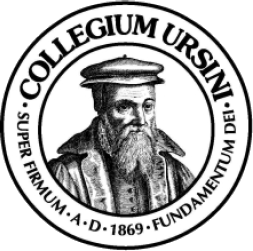
Ursinus College is a private liberal arts college in Collegeville, Pennsylvania. It was founded in 1869 and occupies a 170-acre campus. Ursinus College's forerunner was the Freeland Seminary founded in 1848. Its $127 million endowment helps support about 1500 students. Students choose from 60 courses of study.
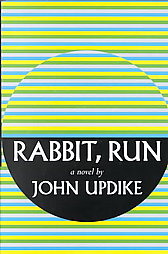
Rabbit, Run is a 1960 novel by John Updike. The novel depicts three months in the life of a 26-year-old former high school basketball player named Harry "Rabbit" Angstrom, who is trapped in a loveless marriage and a boring sales job, and attempts to escape the constraints of his life. It spawned several sequels, including Rabbit Redux, Rabbit is Rich and Rabbit at Rest, as well as a related 2001 novella, Rabbit Remembered. In these novels, Updike takes a comical and retrospective look at the relentless questing life of Rabbit against the background of the major events of the latter half of the 20th century.

The Centaur is a novel by John Updike, published by Alfred A. Knopf in 1963. It won the U.S. National Book Award for Fiction. Portions of the novel first appeared in Esquire and The New Yorker.
Alice Elliott Dark is a writer of short stories, novels and essays. She is the author of the story collections Naked to the Waist and In the Gloaming and the novels Think of England and Fellowship Point, published by Scribner/Marysue Rucci Books in July 2022.
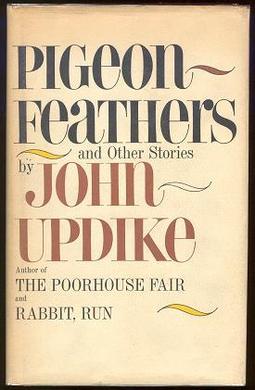
Pigeon Feathers and Other Stories is a collection of 19 works of short fiction by John Updike. The volume is Updike's first collection of short stories, published by Alfred A. Knopf in 1962. It includes the stories "Wife-Wooing" and "A&P ", which have both been anthologized.
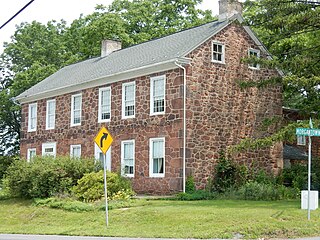
Plowville is an unincorporated area of Robeson Township, Berks County, Pennsylvania, United States. it is located on Pennsylvania Route 10, just east of Interstate 176. Its zip code is 19540 and the community is served by the Twin Valley School District. The most recognizable landmark is Plow Church.

Olinger Stories: A Selection is a collection of 11 works of short fiction by John Updike published by Vintage Books in 1964.
Elizabeth Updike Cobblah is an American art teacher and ceramicist, painter, and illustrator in Massachusetts. She is the eldest child of author John Updike, and was the model for several of his characters. She is married to Tete Cobblah.
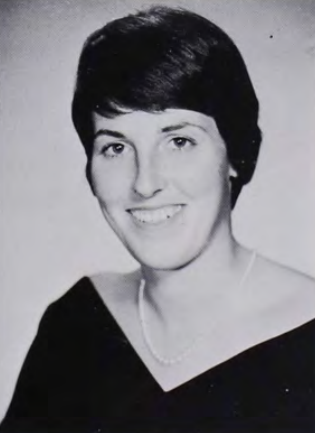
Joan Elaine Moser is an American former field hockey and softball player. She played on the U.S. women's national field hockey team from 1967 to 1979 and was in the first class of inductees into the U.S. Field Hockey Association Hall of Fame. She also played for the world champion Raybestos Brakettes softball team.
Mary Pennington (Updike) Weatherall was a visual artist and the first wife of John Updike. Many of Updike's early characters were modeled after her, particularly in his short stories about the Maple family and his novel Couples. Weatherall was the mother of artist Elizabeth Updike Cobblah and writer David Updike, and the maternal aunt of poet Molly Fisk.
Martha Franc Ruggles Bernhard Updike is a social worker and the widow of author John Updike. She served as a model for several of his fictional characters, including in his story "A Constellation of Events", which was loosely based on the initiation of their relationship.
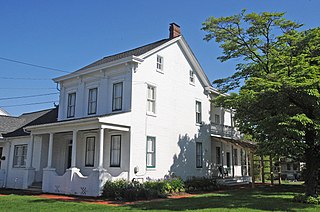
The John Updike Childhood Home is the childhood home of American novelist and two-time Pulitzer Prize winner John Updike, who lived there with his father Wesley Russell Updike and mother Linda Grace Hoyer Updike, who was also a writer. The home is located in Shillington, Pennsylvania, a suburb of the City of Reading.
David Updike is an American writer and academic. Updike is the son of author John Updike, who used him as a model for characters in several works of fiction, including Wife-wooing, Avec la Bebe-sitter, Son, and Separating.

Wesley Russell Updike (1900-1972) was an American educator, soldier, and father of author John Updike, husband of writer Linda Grace Hoyer Updike, and grandfather of David Updike. Wesley Updike served as a prominent model for many main characters his son's works, including as the central character in The Centaur (1963), which won the National Book Award for Fiction, and Updike's family history is broadly paralleled in In the Beauty of the Lilies (1996).
“Snowing in Greenwich Village” is a work of short fiction by John Updike, first published in The New Yorker on January 13, 1956. The story was collected in The Same Door (1959) published by Alfred A. Knopf.
“Pigeon Feathers” is a work of short fiction by John Updike which first appeared in The New Yorker on April 27, 1956. The story was collected in Pigeon Feathers and Other Stories (1962) by Alfred A. Knopf.
"The Happiest I've Been" is a work of short fiction by John Updike, first appearing in The New Yorker on January 3, 1959. The story was collected in The Same Door (1959) published by Alfred A. Knopf.













